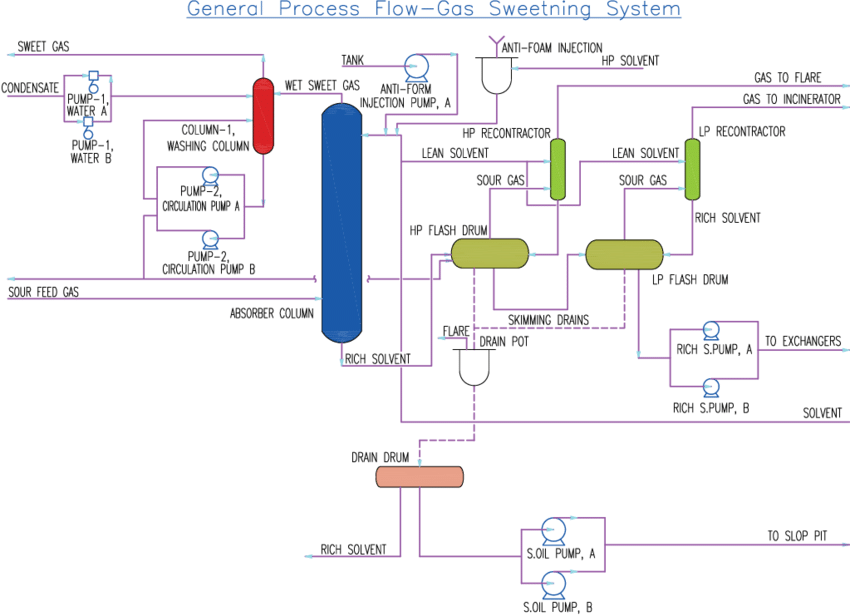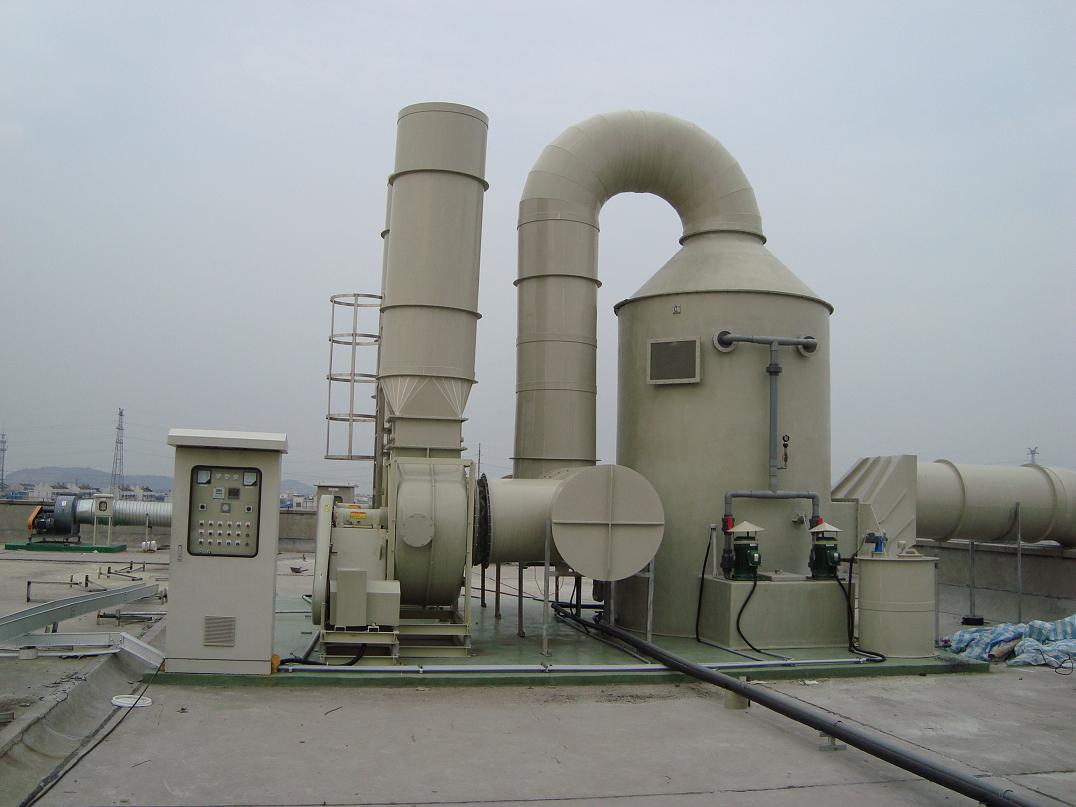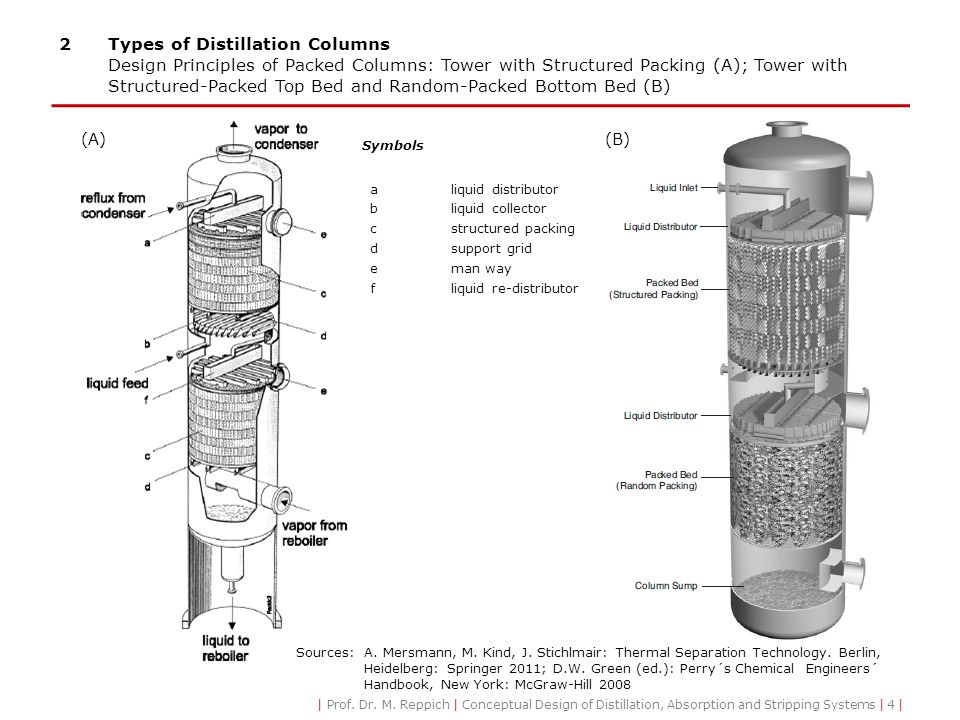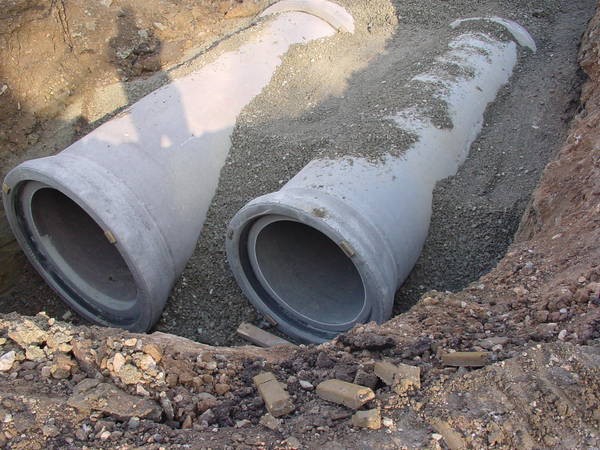What is Gas absorption?

What is gas absorption? Gas absorption, which is also known as scrub is a process in which gas mixture is contacted with a liquid to dissolve one or more of the gas mixture components and get their solution in liquid form. It is like a transfer of a particular gas mass from the gas phase to the liquid phase. The gas component to be transferred is said to have been absorbed by the liquid. Gas absorption, therefore, is a process that involves the diffusion of a gas solute through a non-diffusing liquid.
Gas desorption, on the other hand, is also referred to stripping is a process that involves a mass transfer in the opposite direction, meaning that it is the transfer of liquid phase, to the gas phase. In this case, the components or the liquid is separated by getting it into contact with the gas.
The principles for these two processes, however, are the same. To make it more understandable for you, I'll be giving some examples.
An example of gas absorption is in beverages. Manufacturers dissolve carbon dioxide in drinks like Soda so as when the pressure is released after opening the bottle or containers, effervescence takes place. The other common example is during the removal of ammonia from the air by contact with water. Ammonia is super soluble in water, but the air is only slightly soluble. This makes the separation much achievable.
What is the required gas absorption equipment?

Gas absorption is mainly carried out in a gas absorption heat pump. This is equipment that is operated by a heat source rather than electricity. The machine is made of columns to help in the absorption process which could be, tray-columns, spray, bubble columns or packed columns. It could also be achieved through a gas absorption chiller.
Generally, the equipment operates by the help of pressure which is supposed to be higher than the temperature to allow the absorber to reduce stage requirements and absorbent flow rate to reduce the volume required for accommodating the gas flow. The opposite is true for desorption. However, for an effective process, the operating pressure should not be too high, and the temperature should not be too low.
The absorption columns are classified as follows;
• Tray columns – these are further classified into sieve tray, bubble-cap trays and valve trays. The plates or trays are similar to those used during distillation.
• Packed column – in this case, there are random packing and structured packing.
• Spray column – this is a column in which the gas flows upwards constantly through an open column or pipe while the scrubbing liquids fall from a sprayer or spray nozzles through the gas that needs to be absorbed. It can also be termed as the tower packing which is mostly preferred where there is the need for low-pressure drop, simplicity and resistance to scaling deposition.
• Bubble column – in this process, the gas that is to be absorbed is forced under pressure through pipes that have been submerged into the scrubbing liquid. On absorption, the gas phase is dissolved while the liquid phase is continuous. You will notice bubbles rising through the liquid, which shows that absorption has occurred.
What are the applications of gas absorption?
Primarily, the process of gas absorption is used in the regulation of air pollution. It is applied in the removal of harmful or unwanted components from the gas streams. The role of gas absorption in industrial air pollution control is becoming increasingly important, but as time goes by, the uses go beyond air pollution control. It has become the most important method of separation in many chemical industries. Some of its applications include;
During the manufacture of ammonia, oil desulfurization, manufacture of hydrogen, manufacture of ethylene, low Btu gas, high Btu gas and coal gas to mention a few. The process helps in the removal of unwanted gases to give only the required component. For example, in a case of hydrogen manufacture, the air that comes into contact with the scrubbing liquid is dissolved to give a hydrogen solute.
What is the absorption equipment mode of operation?
The absorption equipment has been designed to help in achieving the recommended interfacial area between the scrubbing liquid and the gas. This is why liquid sprays and gas-bubbling equipment are often preferred. In some cases, an array of vertical trays us arranged to help the liquid to descend over the perforated trays or to flow down a packing tower to reach the gas.
A catalyst may be required to speed up a reaction based on the components that need to be separated. An example is during oils hydrogenation. What's more? Pressure is used to increase the concentration of gas thus speeding the reaction rate. The equipment used will significantly determine the results. Some designs spray the catalyst and oil into the hydrogen while others bubble it through a continuous liquid oil phase in which the catalyst is suspended. The method you choose to use depends on the results you desire to get.
What are the potential problems and their causes?

Sometimes, things may go as unexpected. You may start experiencing issues, the main ones being flooding and foaming. The good thing, however, is that you can test your equipment and agents before te main procedure and see if there are any risks of facing these.
You can check the hydrodynamic or flooding, pressure drop or liquid holdup in a countercurrent column that has two random packing, pall ring, berl saddles, raschig ring and gauze packing at temperatures of between 313 and 373 degrees and pressure of between 8 and 30 MPa. Carbon dioxide is used as the solvent and water or olive as the liquid phases. The experiment will tell if there are flooding points.
To determine the column diameter, you need to know the maximum gas velocity that you can use. This is because using a very high gas velocity will only result in higher resistance encountered by the down-flowing liquid. It will also result in a high pressure drop across the column packings. It will result in a condition referred to as flooding. This is where the liquid in the column becomes too much, and the process gets hard to carry out. Higher pressure than the recommended will damage or crush the packings in the column.
When it comes to the dry packing, that is, the column without liquid, pressure drop rises with an an increase in gas velocity. The two have a linear relationship. In the presence of liquid flowing in the column, the packing gets wet, and the empty volume is now filled with fluid. In this case, the cross-sectional area for gas flow is reduced. The pressure drop for the wet packing is higher at the same gas velocity as for the dry column.
What about foaming? You may discover some abrupt foaming during your gas absorption process. It can be frustrating, and you may feel like your efforts have gone to waste especially if you know little or nothing about. This is a situation where the liquid used in the absorption expands and therefore offering a high resistance between the liquid phase and the gas phase. Although it is uncommon, it is something to be worried about especially when carrying out industrial gas absorption processes.
The primary cause of this problem is due to contaminants in the gas feed. It may absorb some contaminants such as glycols and hydrocarbons which may fail the entire process as it hinders upset in the absorber column.
However, these are not the only potential cause of these problems. Some of the other aspects to look into if you come across foaming or flooding are;
Malfunctions – you may experience either foaming or flooding due to an equipment failure. If any of the column components fail to operate correctly, the results will poor flow of the liquid and gas which is equivalent to operation issues like foam and flood.
Components physical properties – if you notice these issues, you might consider checking the physical properties of the gas and liquid used. Are there chances of occurrence of ring polymers based on the properties of the elements used? The surfactants result in reduced surface tension which results in foam.
Use of wrong catalysts and anti-foam agents - the use of the wrong catalyst to speed up the reaction or agents to prevent foaming could turn out to be the foaming catalysts. This could result from the use of the wrong compounds that do not go well with the solvent.
Tray placements – foaming could result due to poor placement of the trays can adversely affect the whole process. Remember that there are two columns where one component is flowing up while the other one flows downwards. If the trays are closely packed above each other, the liquid will expand and end up flowing on the wrong tray.
I wish to make it clear that flooding and foaming are two different things. Foaming is mainly caused when the acting agents are contaminated with the solution while flooding is primarily as a result of hydraulic phenomena. The signs and consequence of the two problems are the same such that high pressure drops in the absorption column and rises in the solution. Inspect your column and check if there is a blockade of trays or downcomers if it starts showing flooding signs.
Conclusion
I firmly believe that this guide is enough to answer all your questions regarding gas absorption and the application of gas absorption adsorption in industry. You now understand about the different equipment used for the process and the issues that you may face. If you are a business owner dealing with gas separation, this is what you need to run a successful business, and we are here to help. Our goal is to ensure that you are comfortable operating the equipment and that you are confident with what you are doing. We can assist you in selecting the right machine that will suit your specific needs. Contact us for further guidance on the same and make your dream of running a chemical based business come true.







